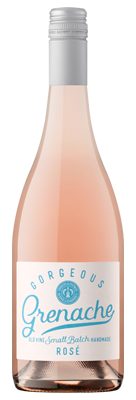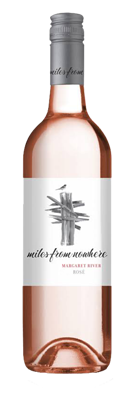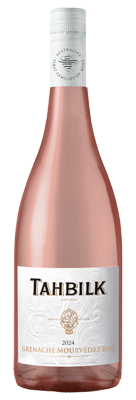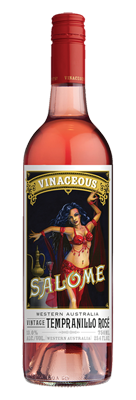Filter by
- In name and nature... gorgeous Grenache pretty and satisfying in pink from Grenache masters!$26.00 RRPfrom $21.25 when you mix 12+
- $18.00 RRP$11.99 when you mix 12+
- High altitude, strawberry and spice rosé from close to Adelaide.$22.00 RRPfrom $16.99 when you mix 12+
- 94pt McLaren Vale Shiraz "balanced and delicious" (WinePilot) from a resilient winemaking family.$25.00 RRPfrom $19.99 when you mix 12+
- Classic Provençal elegance in this rosé by Monsieur Paul, master of pinks of brightness and charm.$28.00 RRPfrom $19.99 when you mix 12+
- A refreshing, easy drinking and exceptional value Margaret River rosé.$22.00 RRPfrom $15.99 when you mix 12+
- Elegant, good-looking rosé from cricket legend Ricky Ponting and award-winning winemaker, Ben Riggs.$25.00 RRP$21.99 when you mix 12+
- Fine, elegant, fresh berry rosé from the only cellar permitted to put Saint Tropez on the label.$40.00 RRPfrom $29.99 when you mix 12+
- Memorably named, exquisite rosé from Langhorne Creek. Good looking and delicious!$25.00 RRP$16.99 when you mix 12+
- 94pt Great Value Grenache Mourvèdre pink – "an all-rounder at the table" (Halliday)$21.95 RRPfrom $19.75 when you mix 12+
- 93pt very appealing, “aromatically stunning” (WinePilot) – and highly drinkable Clare Valley pink.$24.00 RRPfrom $18.99 when you mix 12+
- Brilliantly pink single-vineyard Shiraz Rosé grown by Barossa local Darren Heidenreich$25.00 RRPfrom $14.99 when you mix 12+
- 92pt 2025 release of an Adelaide Hills pink sparkler is “very good rosé in anyone’s book” (Halliday)$42.00 RRPfrom $39.99 when you mix 12+
- Alluring 90pt, Great Value Tempranillo rosé from the dynamic Vinaceous Wines.$22.00 RRPfrom $18.99 when you mix 12+
- Attractive colour, generous full fruit flavour – 9.5% alcohol!$27.00 RRP$20.99 when you mix 12+
- Elegant, good-looking rosé from cricket legend Ricky Ponting and award-winning winemaker, Ben Riggs.$25.00 RRPfrom $23.99 when you mix 12+
- Another quacking Aus-meets-Italy rosé, a favourite from 'Grape Whisperer' Sam Trimboli.$18.00 RRPfrom $12.99 when you mix 12+
- Magnum of delicious bestselling pink. Another quacking Rosé from Sam Trimboli.$36.00 RRPfrom $29.99 when you mix 12+
- Showing (1 to 18 of 18)
1
Page 1 of 1
Wine FAQs
What is dry rosé wine?
Dry rosé wine is a pink wine that doesn’t taste sweet. The term dry refers to a lack of residual sugar after fermentation. During this process, the added yeast converts all of the natural sugar in the grape juice into alcohol.
Rosé wines come in many colours, from a light ‘onion-skin’ orange to a bright raspberry red. This depends on the types of grapes used and how the wine is made.
Dry rosé wines are popular for their fresh, crisp flavours, featuring citrus, red fruit and melon notes. They often have a floral character. Some dry rosés may also have an earthy and mineral dimension, particularly those from regions such as Provence in France or Rioja in Spain. The local grape varieties from these regions add depth and texture to the wines, thanks to their unique terroirs.
How is dry rosé wine made?
Dry rosé wines can be made using any red-skinned grape, but they are typically made from red grape varieties such as Grenache, Pinot Noir and Syrah. The wine is made using one of four methods:
- Limited skin maceration is the most common method of making rosé wine. Red wine grapes are crushed and left to macerate with their skins for a short time – from a few hours to a few days. The juice is then drained or ‘bled’ from the skins and fermented separately. As the contact with the grape skins is so brief, the result is a rosé wine.
- Direct pressing is another commonly used method that is very similar to the production of white wine. It involves pressing red grapes as soon as they have been harvested. The juice has very brief contact with the skins, giving it just enough time to pick up enough colour to classify it as a rosé.
- The saignée or ‘bleeding’ method bleeds off some of the juice used to make red wine after it’s been in contact with the skins and seeds for a short time. This juice is then fermented separately to produce rosé wine. Not only does this method make high-quality rosé, but it also enhances the concentration of the red wine left behind.
- Blending involves adding a small amount of red wine to a white wine to achieve the desired pink colour. This method is rarely used elsewhere but is used in Australia as part of our more experimental approach to winemaking, and is also used to make rosé Champagne.
Once the fermentation process is finished, it’s common practice to let the wine mature on its lees (dead yeast cells) for a few months before it is filtered and bottled – this allows the wine’s complexity to develop. Dry rosé wines are best enjoyed young at their freshest, so you can experience their bright fruit notes.
What are popular dry rosé wines?
There are many types of dry rosé wines, which are largely influenced by the grape variety and the region where they are made. Some of the most popular types and styles of dry rosé include:
- Australian rosé – Australian rosés are usually made from Grenache, Pinot Noir or Shiraz, and are made in regions such as Barossa Valley, McLaren Vale and Yarra Valley. They are typically dry with vibrant fruit flavours, and some may have a hint of spice, especially those made from Shiraz.
- Provence rosé – One of the most famous regions for rosé is Provence in France. The rosés here are often made from a blend of grapes like Grenache, Cinsault and Mourvèdre. This produces a light, dry wine with delicate red fruit and floral notes, often with a distinct minerality.
- Spanish rosado – Spanish rosé or ‘rosado’ is fuller and deeper in colour than its French counterparts. Often made from Grenache or Tempranillo grapes, these wines are dry and fresh with red fruit and sometimes a hint of spice.
- Italian rosato – Italian rosé or ‘rosato’ can vary depending on the region and the grapes used. Nebbiolo, Montepulciano and Sangiovese are typically used to make dry, refreshing rosés. They are full of fruit flavours, from tart cherry to ripe strawberry.
- Tavel rosé - A dry, full–bodied rosé from the Rhône region in France, Tavel rosés are known for their deep pink/light red colour. They are made from a blend of Cinsault and Grenache.
- American rosé – Rosé wines from California and Oregon range in style from light and refreshing to full and fruity. They can be made using almost any red grape variety.
How to serve dry rosé wine
To experience the fresh and fruity character of your dry rosé wine, serve it at around 8-14°C. If it’s too cold, you risk muting the flavours. You can serve rosé wine in a standard white glass to help concentrate the aromas as you sip.
Rosés do not typically need decanting; they are meant to be enjoyed young and fresh. Simply open and pour! If you have an older, more complex rosé, it could benefit from a brief period of aeration.
How to store dry rosé wine
Dry rosé wines should be stored in cool conditions between 8-14°C, as this helps to prevent the wine from ageing prematurely. It should be kept away from direct sunlight, which can impact the quality of the wine. So, it’s best to avoid storing dry rosé wine in areas that can get excessively warm, like kitchens and laundry rooms.
Bottles of dry rosé wine sealed with a cork should be stored on their side to prevent the cork from drying out.
How long does dry rosé wine last after opening?
After opening a bottle of dry rosé wine, it’s best to enjoy it within 2-3 days, although some rosé wines can last up to 5-7 days once opened. Once opened, the taste and freshness may decline more rapidly in older rosés than fresh, young rosés.
The longer the rosé is left open, the more it will be exposed to oxygen. This can alter the colour, flavour and aroma of the wine. Finishing a bottle of dry rosé wine as soon as possible after opening is best.





















